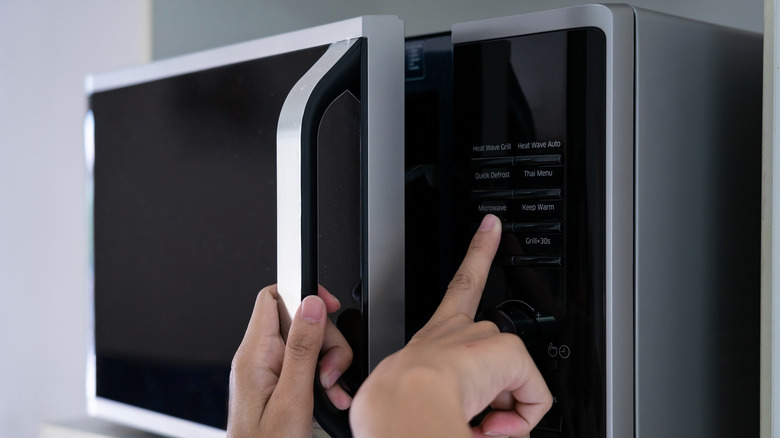Microwave Corn On The Cob In The Husk For Easy Shucking
Corn on the cob is one of the peak summer treats to look forward to. Delicious and juicy, especially when topped with butter, munching on those tiny kernels just the way you like is always super fun. However, before you get to enjoy this summer cookout side dish, you have to first go through the less enjoyable process of shucking the corn, which can be a real time-consuming struggle. The solution? Microwave the corn on the cob in the husk.
The process is pretty straightforward. Place the ears on a microwave-safe plate and pop them in the microwave with the husk intact. You can do this for one ear or a few at a time but avoid crowding the microwave. Cook on high for two to four minutes per ear, depending on the size. The cook time also depends on your microwave's wattage so you'll have to test and see what time works best for you.
Once the timer goes off and the corn is cooked, hold the ears with oven mitts or a towel to avoid getting burned and remove from the microwave. Place the ear on a cutting board, let cool for a few minutes then cut off the stem using a sharp knife. Finally, hold the fluffy end firmly and squeeze while pulling at the husks. The corn will slide right out from the other end completely clean — no husks or silk.
Why the microwaving hack works
Most recipes require shucking corn on the cob before cooking, which is tedious because the silk threads tend to cling to the corn and can be stubborn to remove. This is one of the best tips for shucking corn fast and easily because steam builds up inside the ear and helps loosen the husks and the silk threads as it is cooked in the microwave. That's why they peel off so easily when pulled away from the corn.
This hack isn't only meant to simplify the shucking process, it's an easy and quick way of cooking corn on the cob. It produces a more delicious side dish as the kernels are not diluted by any water as is the case with boiling. Instead, the corn cooks in its juices resulting in a higher concentration of natural flavors and a tender texture while still retaining that delightful bite. However, be careful not to microwave the corn for too long, as overcooked corn can become mushy and lose its fresh, crisp texture. If you're unsure, it's best to start with a shorter cooking time and add more time if needed.

